Facts About Lungs Biography
(Source google.com)
In humans, the trachea divides
into the two main bronchi that enter the roots of the lungs. The bronchi
continue to divide within the lung, and after multiple divisions, give rise to
bronchioles. The bronchial tree continues branching until it reaches the level
of terminal bronchioles, which lead to alveolar sacs. Alveolar sacs, are made
up of clusters of alveoli, like individual grapes within a bunch. The
individual alveoli are tightly wrapped in blood vessels and it is here that gas
exchange actually occurs. Deoxygenated blood from theheart is pumped through
the pulmonary artery to the lungs, where oxygen diffuses into blood and is
exchanged for carbon dioxide in thehaemoglobin of the erythrocytes. The
oxygen-rich blood returns to the heart via the pulmonary veins to be pumped
back into systemic circulation."Lung Disease & Respiratory Health Center
Human lungs are located in two
cavities on either side of the heart. Though similar in appearance, the two are
not identical. Both are separated into lobes by fissures, with three lobes on
the right and two on the left. The lobes are further divided into segments and
then into lobules, hexagonal divisions of the lungs that are the smallest
subdivision visible to the naked eye.[citation needed] The connective tissue
that divides lobules is often blackened in smokers. The medial border of the
right lung is nearly vertical, while the left lung contains acardiac notch. The
cardiac notch is a concave impression molded to accommodate the shape of the
heart.
Each lobe is surrounded by a
pleural cavity, which consists of two pleurae. The parietal pleura lies against
the rib cage, and the visceral pleura lies on the surface of the lungs. In
between the pleura is pleural fluid. The pleural cavity helps to lubricate the
lungs, as well as providing surface tension to keep the lung surface in contact
with the rib cage. Lungs are to a certain extent
'overbuilt' and have a tremendous reserve volume as compared to the oxygen
exchange requirements when at rest. Such excess capacity is one of the reasons
that individuals can smoke for years without having a noticeable decrease in
lung function while still or moving slowly; in situations like these only a
small portion of the lungs are actually perfused with blood for gas exchange.
Destruction of too many alveoli over time leads to the condition emphysema,
which is associated with extreme shortness of breath. As oxygen requirements
increase due to exercise, a greater volume of the lungs is perfused, allowing
the body to match itsCO2/O2 exchange requirements. Additionally, due to the
excess capacity, it is possible for humans to live with only one lung, with the
one compensating for the other's loss.
The lung is the essential
respiration organ in many air-breathing animals, including mosttetrapods, a few
fish and a few snails. In mammals and the more complex life forms, the two
lungs are located near the backbone on either side of the heart. Their
principal function is to transport oxygen from the atmosphere into the
bloodstream, and to release carbon dioxidefrom the bloodstream into the
atmosphere. A large surface area is needed for this exchange of gases which is
accomplished by the mosaic of specialized cells that form millions of tiny,
exceptionally thin-walled air sacs called alveoli. To understand the anatomy of
the lungs, the passage of air through the nose and mouth to the alveoli must be
studied. The progression of air through either the mouth or the nose, travels
through the nasopharynx, oropharynx, larynx, and the trachea (windpipe). The
air passes down the trachea, which divides into two main bronchi; these branch
to the left and right lungs where they progressively subdivide into a system of
bronchi and bronchioles until the alveoli are reached. These many alveoli are
where the gas exchange of carbon dioxideand oxygen takes place.
Breathing is driven by muscular
action; in early tetrapods, air was driven into the lungs by thepharyngeal
muscles via buccal pumping, which is still found in amphibians. Reptiles,
birdsand mammals use their musculoskeletal system to support and foster
breathing. Medical terms related to the lung often begin with pulmo-, such as
in the (adjectival form:pulmonary) or from the Latin pulmonarius ("of the
lungs"), or with pneumo- (from Greekπνεύμων "lung").

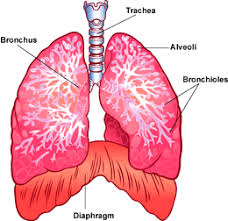
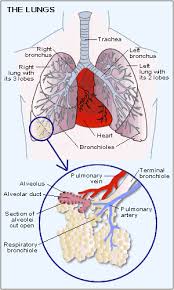
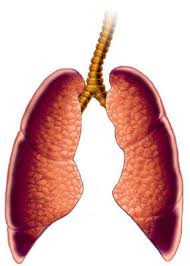

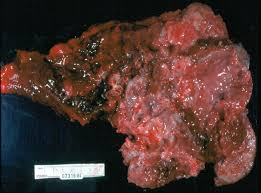
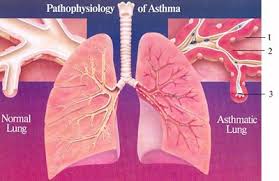

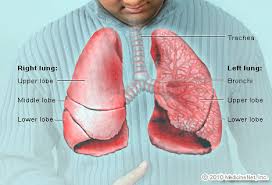
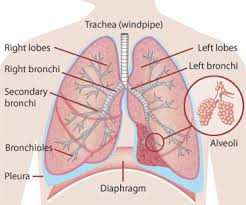
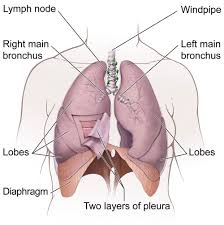



No comments:
Post a Comment